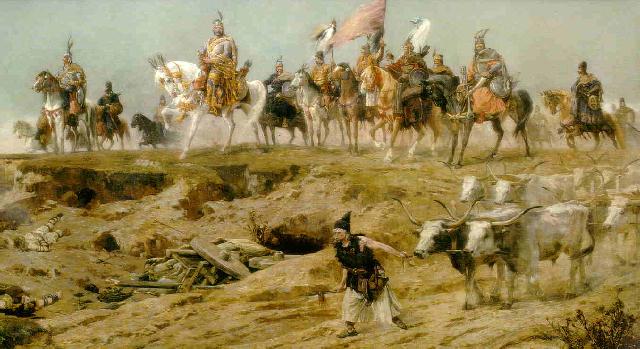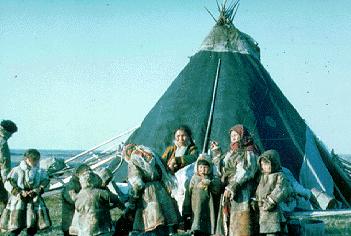
![]()
Genealogy
The Dutch connection
The name 'van Eeuwen' is not quite common in the Netherlands. It literally means 'from Ages'. 'Ages" is the multiple form of 100 years. In comparison: the Dutch name 'van Leeuwen' is very common, Leeuwen meaning 'Lions'. A lot of Dutch names start with 'van". As there are not too many van Eeuwen's we feel a bit privileged! In the second half of the 19th century, around 1860, three brothers decided to try there luck in the New World. So there is a American Connection out there, please beware. For further information please consult the relevant links.
The family name originates from the island of
Goeree-Overflakkee in the south-western part of the country. In the 16- and
17-hundreds the name was written as 'van Eeúwen'. There must have been a reason
why the 'ú' was used and why from a certain point in time it
changed into a simple 'u'. Less chique I feel.... I have not
yet found out the reason behind it. But we will.
An English language web site specifically dedicated to ancestry on the island of
Goeree-Overflakkee can be found at:
http://www.geocities.com/leoaker/
My mother's family name was 'Pajor' and she was born in Hungary
in the small city of Szombathely (literally meaning:
Saturday's place) very near the Austrian border. She came to Holland in 1928, when
she was 18. I visited the house in which my grandmother once had
lived in the very small village of Bozsok. It was interesting that the Austrian
- Hungarian border fence was at the back of the garden. An uncle of my mother still l
ived in the
house when I visited it. He had one arm, the other one was lost in a harvesting
machine when he was young. It was said that he never blacked out
during and after the incident. I still have an uncle and nephews and nieces over there.
We used to travel to Hungary quite a number of times to meet the
family out there. In the beginning it was quite an experiences as apart from all the
loving kisses from my nieces, I got the same treatment from my nephews. The
Dutch are not used to that custom and in the beginning we froze in our tracks when being
hugged and kissed by the often unshaven uncles and nephews. However, the many
aunts and nieces made up for it. A culture shock but one gets used to it pretty fast
I must say. As my wife and I could not speak any Hungarian and the family did not
speak
any foreign language we decided to learn the lingo. We did that by turn, one of us had
to take care of our two children in the evenings. We took Hungarian language courses at
the People's University in Rotterdam. In
August 1977 I also attended a summer course at the Kossuth Lajos University
of Debrecen, a town in the eastern part of Hungary. It was interesting to note that
a large group of Finnish students took part in this language course. That is
explainable from the fact that both
Hungarian and Finnish are related languages and belong to the Finn-Ugric
language family. When visiting Hungary we made an increasing
use of our growing vocabulary and knowledge of the grammar. It was very nice to be able
to converse with our family over there, although when they started to 'machine gunning'
we had to ask them to slow down a bit.... Hungarians in general are shocked when
a foreigner is able to speak their native tongue. We share that feeling, as Dutch is
also not a very common and accessible language and hardly spoken by
foreigners. Hungarian artist Árpád Feszty's 1894 monumental
panoramic painting depicts the settlement of Hungary by the Magyar chieftains in
896. Nearly twenty painters were
involved in the work and in less than two years' time this monumental
mural was completed. Many contemporary artists helped Árpád Feszty with the
two year task that lasted from 1892 to 1894. Landscapes are by László
Mednyánszky and the battle scenes by Pál Vágó. The painting, called a
cyclorama, is housed in a special building in Opusztaszer,
Hungary. The
panorama is significant in artistic value and in size, as well. It is 120 meters
long and 15 meters wide - forming a gigantic circle of 38 meters. This a detailed part of the painting which chronicles
The Conquest - the
most important event in Hungarian history - with more than 2000 people,
including horseman, chieftains and peasants painted onto the canvas. The picture
illustrates Chief Árpád
on a White Horse. In the
background, one can see the beautiful valley of Voloc [pronounced: "volots"]
- the landscape around Munkacs, which was the scene of the Conquest, and is now
part of the Ukraine. During World War II, the painting was damaged. Then, for years, it was stored
in a basement room of the Museum of Fine Arts in Budapest.
My grandfather was quite an experience also. I met him for the first and last time in 1961.
He had a house then near a small lake about halfway between Budapest and lake Balaton.
We could not locate him although we clearly heard his voice somewhere nearby. As it turned
out he was, at an age of about 76, hidden in the foliage of a very tall apple tree in front
of the house. He came 'out of the green' and descended the long ladder to greet us. He was
always proud that he never had drunk water, except as a child and 'maybe' he said. Water was
something to wash your hands in. Candidly he would add to this statement that you
usually did not eat your soap either....... When he was in the hospital once, his two sons
would smuggle in bottles of wine and 'Palinka' (40 to 60% liquor homebrew from prunes or
apricots) every day. When he was discharged he showed the empty bottles to the very angry
doctor and claimed that the contents of the emptied bottles had probably cured and
saved him and not so much the doctor's treatment.
The grammar of the Hungarian language is rather simple. Hungarian also is a very logic,
almost mathematical language. For example a Hungarian says 'two horse' instead of 'two
horses' as they think is sufficient to use the singular form as the number 'two' already
indicates that it is a plural and why use two 'plurals' on top of each other? There
is no strict order for the words in a sentence, sometimes a slight preference only. In
Dutch the place of the words in a sentence are rather critical. The pronunciation
of Hungarian is very easy. In fact it is a phonetically written language. If you
know
a few rules you can pronounce the words almost immediately. The stress in a word is,
without any exception, always on the first syllable. Both these last two things are
a real disaster in our language and makes it very difficult for foreigners to learn the
Dutch language. A slight snag is that the Hungarian language does not have the verb
'to have'. Everything is conjugated with the verb 'are'. This is also true of the
Finnish language with whom Hungarian is related. You can't say for instance 'I have wine',
but have to say 'My wine is to me': 'Borom nekem van'. Bor means wine. Borom means 'my wine'
and Borod means 'your wine'. Borommal means 'with my wine' and boroddal means 'with your wine'.
The plural of Bor is borok. So 'borokommal' means 'with my wines'. Like in Finnish a
lot of such suffixes are used, which makes it a very powerful, almost cryptic languages.
Also prepositions are almost never used, unless to stress something. So a lot of unnecessary
items and useless information is discarded. That's the beauty of the language I think.
Hungarian is a beautiful language to listen to. I has a kind of nice, even and soothing
drone to it. To hear the sound of the language you can tune to Budapest Radio or other
Hungarian radio stations on the short-wave. For an updated schedule with
frequencies and operating times go to: http://www.english.radio.hu/index.php?cikk_id=33385&rid=PT1RTzFBVE0=
Another possibility is to listen through the
Internet to Budapest Radio or other Hungarian stations. You may go to the following web
site address: http://www.english.radio.hu/index.php?rovat_id=1059
and make your choice between Kossuth, Petöfi or Bartók Radio. It is also possible is to download a nice Hungarian
internet radio program which gives you the choice of many Hungarian radio
stations. Please go to: http://www.vilagradio.hu/main.html
Hungarian language
Hungarian is part of the Finn-Ugric language group. In the old days the nomadic people probably came over the Ural mountains in Northern Russia, Siberia to Finland and stayed there. Another part went on in a southern direction and ended up were Hungary is now. In the Hungarian language Hungary is referred to as Magyarország, the Land of the Magyars. Apart from Finnish, a lot of Finn-Ugric languages are still spoken in Russia. In the Yamal peninsula there are still about 7500 Nenets, reindeer herders. They have lived there since prehistoric and historic times. The total population in the four autonomous Okrugs as they are called is about 35.000. During the last seventy five years of Soviet rules they managed to maintain their traditional life ways. What is breaking them up now is the richness of especially natural gas resources in the area and this will probably make them extint in a very short period of time as the oil and gas company have no use for them and poor as they are, do not even hire them on. The Nenets can be divided in Tundra Nenets and Forest Nenets. It is interesting to note that some words, even after so long a period, are still the same or closely resembling in the Forest Nenets and Hungarian languages. Bear in mind that in time often consonants do change or disappear:
| FN | Hungarian | English |
| hajem | harcos | warrior |
| ham | sapka | cap |
| hamba | hab | foam |
| law | ló | horse |
| maraka | anyóka | berry |
| ne | nö | woman |
| nim | név | name |
| to | tó | lake |
| tu | tüz | fire |
| warngei | varjú | crow |
| wäms | has | pelvis |
| wij | vö | son-in-law |
| wit | viz | water |
It is quite astonishing that after more than thousand years quite a lot of similarities are still present. Apart from such common words also things like the missing verb 'to have', suffixes etc are proof of the connection to the Finn-Ugric language group.

The Nenets, the indigenous reindeer herders are now under siege by oil industry.
"If you take 100 pounds of my gold, then why can't you leave me just two", Yaloki Nimperov wrote in a letter to Senur Markianovich Khuseinov, Head of the Kamynskoye oil field which belongs to the Company Surgutneftegaz. Yaloki is angry. For many centuries his ancestors have been inhabiting this piece of land in the West Siberian Taiga, northern from the middle Ob on the river Pim. For centuries reindeer breeders and fishers knew how to sustain themselves within this barren land, how to withstand the chilling colds in the wintertime and the swarms of mosquitoes in the summer. Now their traditional way of life is in danger."
Other web sites with lots of information on the Nenets, their way of life and nowadays threats can be found at:

|
A Nenets summer camp |
|
| http://babel.uoregon.edu/yamada/guides/nenets.html | University of Oregon - Nenets |
| http://www.samoyed.org/nenets.html | The Nenets |
| http://www.christusrex.org/www1/pater/JPN-nenets.html | |
| http://odur.let.rug.nl/~bergmann/russia/languages/nenets.htm | |
| http://www.nationalgeographic.com/geoguide/nenets/ | |